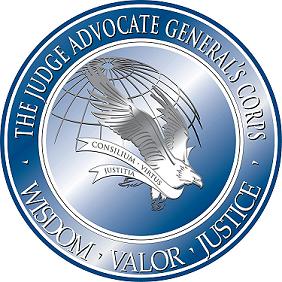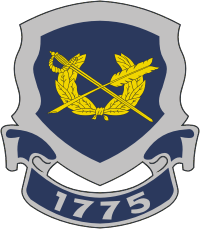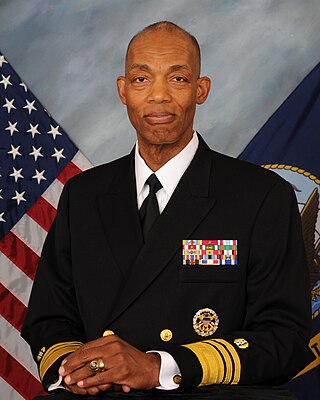A bar association is a professional association of lawyers as generally organized in countries following the Anglo-American types of jurisprudence. The word bar is derived from the old English/European custom of using a physical railing to separate the area in which court business is done from the viewing area for the general public.

The Judge Advocate General's Corps, also known as the "JAG Corps" or "JAG", is the legal arm of the United States Navy. Today, the corps consists of a worldwide organization of more than 730 commissioned officers serving as judge advocates, 30 limited duty officers (law), 500 enlisted members and nearly 275 civilian personnel, all serving under the direction of the Judge Advocate General of the Navy.

The Judge Advocate General's Corps also known as the "JAG Corps" or "JAG" is the legal arm of the United States Air Force.

The Judge Advocate General's Corps of the United States Army, also known as the U.S. Army JAG Corps, is the legal arm of the United States Army. It is composed of Army officers who are also lawyers and who provide legal services to the Army at all levels of command, and also includes legal administrator warrant officers, paralegal noncommissioned officers and junior enlisted personnel, and civilian employees.

The Coast Guard Judge Advocate General oversees the delivery of legal services to the United States Coast Guard, through the Office of the Judge Advocate General in Washington, the Legal Service Command, offices in the Atlantic and Pacific Areas, nine Coast Guard Districts, the Coast Guard Academy, three training centers, and a number of other activities and commands. Legal services are delivered by Coast Guard judge advocates and civilian counsel in ten legal practice areas: criminal law/military justice, operations, international activities, civil advocacy, environmental law, procurement law, internal organizational law, regulations and administrative law, legislative support and legal assistance.
The United States Marine Corps' Judge Advocate Division serves both to advise the Commandant of the Marine Corps (CMC) and other officials in Headquarters, Marine Corps on legal matters, and to oversee the Marine Corps legal community. The head of the Judge Advocate Division (JAD) is the Staff Judge Advocate to the Commandant.

The Judge Advocate General of the Navy (JAG) is the highest-ranking uniformed lawyer in the United States Department of the Navy. The Judge Advocate General is the principal advisor to the Secretary of the Navy and the Chief of Naval Operations on legal matters pertaining to the Navy. The Judge Advocate General also performs other duties prescribed to them under 10 U.S.C. § 5148 and those prescribed under the Uniform Code of Military Justice.
The Judge Advocate General's Corps, also known as JAG or JAG Corps, is the military justice branch or specialty of the United States Air Force, Army, Coast Guard, Marine Corps and Navy. Officers serving in the JAG Corps are typically called judge advocates.

Vice Adm. James Walter Crawford III is a university administrator and former United States Navy officer, serving for 34 years before retiring. He is currently the president of Felician University in New Jersey, having assumed the role in June 2021.
Mark E. Salter is an American attorney, veteran, and current Associate Justice of the South Dakota Supreme Court, appointed by Governor Dennis Daugaard in 2018. He became the 51st member of the court.

Donald Joseph Guter is an American educator, lawyer and former United States Navy rear admiral who was the 10th president and dean of South Texas College of Law Houston from 2009 to 2019. He previously served as the 10th dean of the Duquesne University School of Law from 2005 to 2008, when he was dismissed by Duquesne University president Charles J. Dougherty over a tenure battle.







